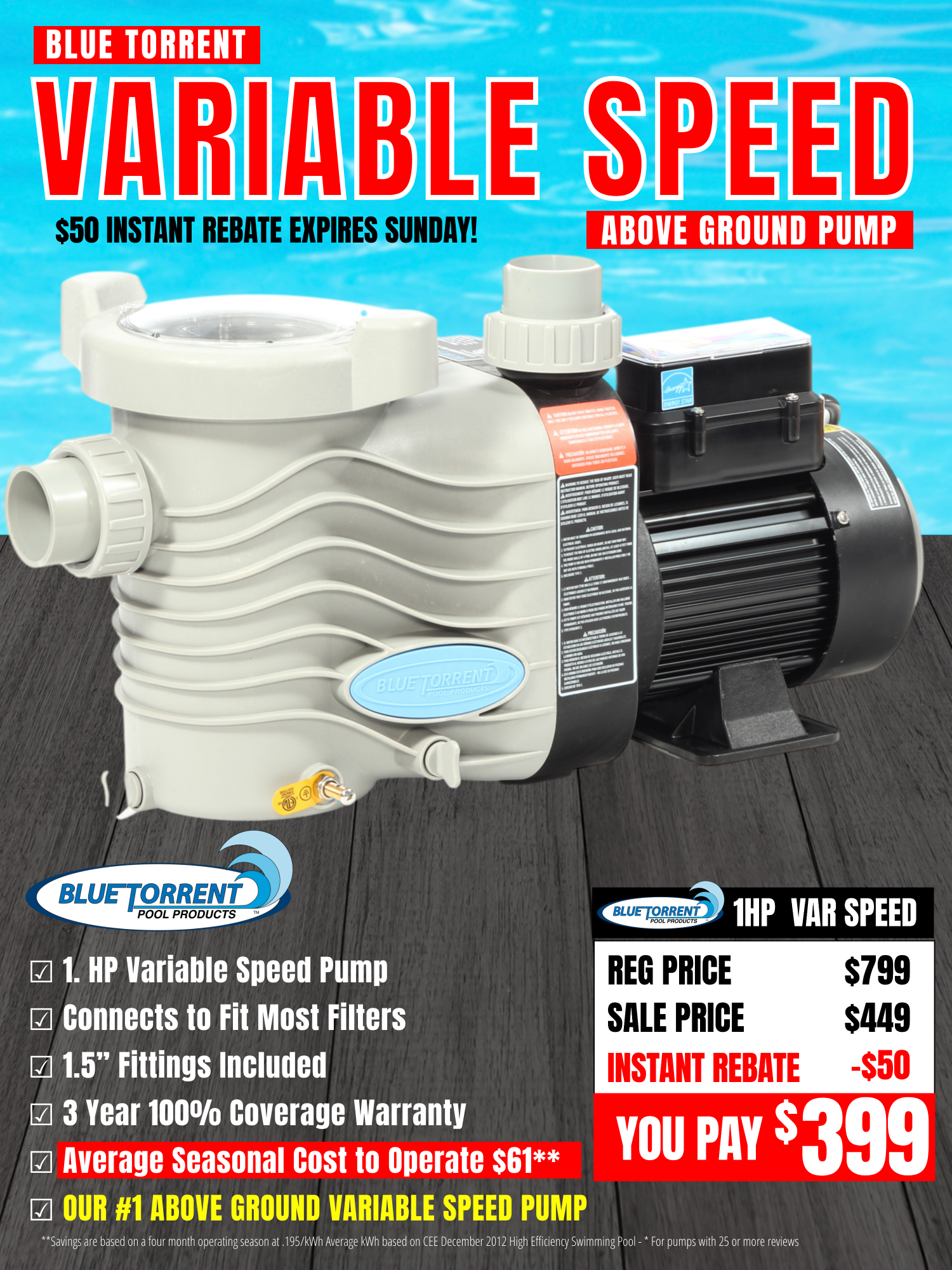Are You Using The Wrong Pump For Your Pool?
Over the last few years there has been a lot of talk about speed in swimming pool pumps. Which is better?Who is right? Which pump is best for my pool? Let’s simplify it. Forgetting the different models and brands, you have 3 basic choices, Single Speed, Dual Speed and Variable Speed.
The most common pump type is also the oldest- SINGLE SPEED. They operate at one constant high speed of 3450 RPMS. Single speed pumps commonly have the lowest initial cost but have the highest cost to operate.
Dual Speed pumps can operate at two speeds, 3450 RPM as well as 1750 RPM’s. Typically Dual Speed pumps cost a little more than single speed pumps but more than make up for it in the cost to operate the pump. In most cases you can save up to 50% of the operating cost over single speed pumps. This is due to the pump needing less amps when it is running at the lower speed.
Then there’s Variable Speed pumps. They can operate at a wide range of speeds from a low of only 600 RPMs all the way up to 3450 RPM’s. The reason for their popularity is that they are by far the least expensive type of pump to operate. Variable Speed Pumps can save you up to 80% of the operating costs of single speed pumps. The upfront cost is higher but variables actually pay for themselves in electric savings.
I know what you're thinking, How much can I really save?
Consider this:
- Your swimming pump can account for 25% of you household energy bill
- Uses 3 times the electricity of your refrigerator
- Is the largest electricity consumer in your home
And as you know, electricity is EXPENSIVE
HERE COMES THE MATH
Historically, single speed pumps are oversized for your pool. The “bigger is better” logic just isn’t true. They waste too much energy pumping pool water at too high of a speed and the only thing that gets bigger is your electric bill. Dual speed and Variable speed pumps eliminate a lot of the wasted energy because they can maintain your pool at lower speeds.
Running your pump at lower speeds- even for longer time periods will cost you much less then running a single speed for a shorter period of time. The energy savings you gain by using a dual speed or variable speed pump versus a single speed pump is tremendous and it’s based on the Affinity Law Engineering Principle. (here comes the math) Without having to break out your high school algebra textbooks this principle states that your ELECTRIC SAVINGS ARE DISPROPORTIONATELY LARGER AS YOU LOWER THE SPEED OF YOUR PUMP.
HOW MUCH LARGER?
If you reduce the speed of you pump by 50% you don’t get a 50% energy savings , you actually get a 75% Savings.
To take it one step further- If you reduce the RPM’s (speed) of the pump by only 66% you get an 89% ELECTRIC SAVINGS.
Who doesn’t want to save 89%. The Savings are just too good to pass up .
|

|

|
|
 |
Recent Posts
-
Are You Using The Wrong Pump For Your Pool?
Over the last few years there has been a lot of talk about speed in swimming pool pumps. Which is be …Mar 22nd 2024 -
The Best "Super Pump" Replacement
Are you looking to replace your worn out Super Pump but can’t seem to find one anywhere? You are not …Mar 3rd 2024 -
Does Your Child Use Pool Dive Games?
Swimming is a fun and beneficial activity for children of all ages, and pool dive games can add an e …Mar 14th 2023






